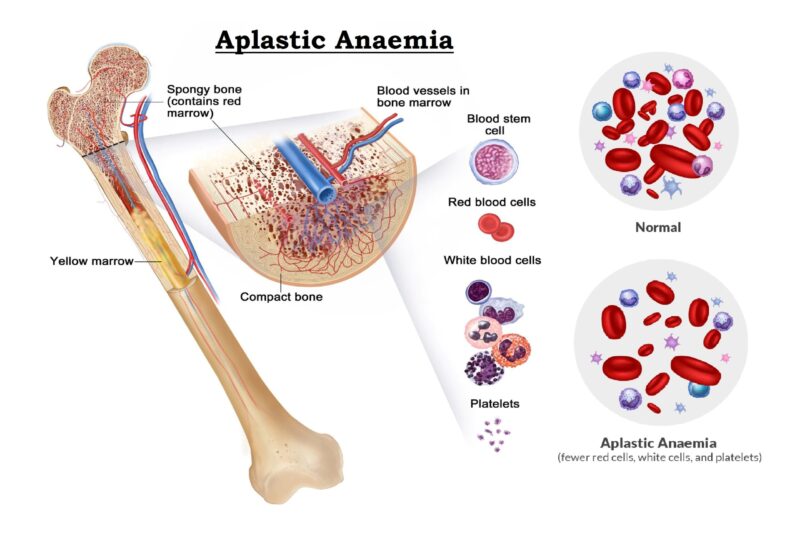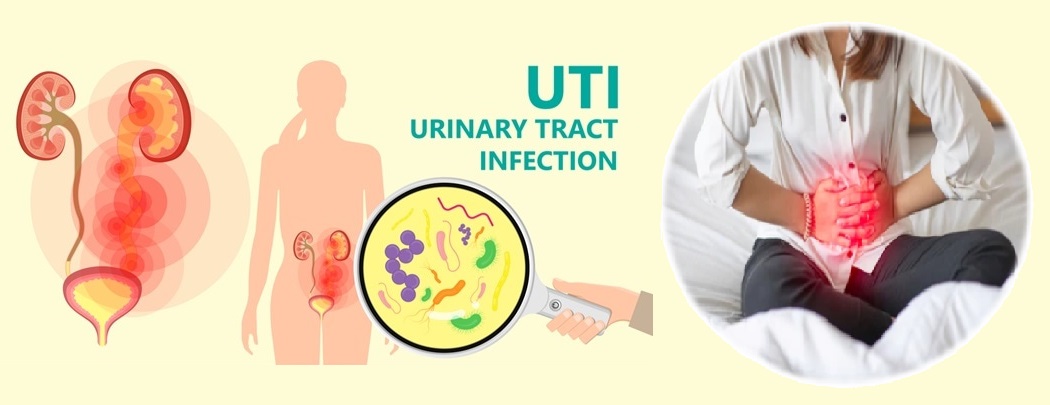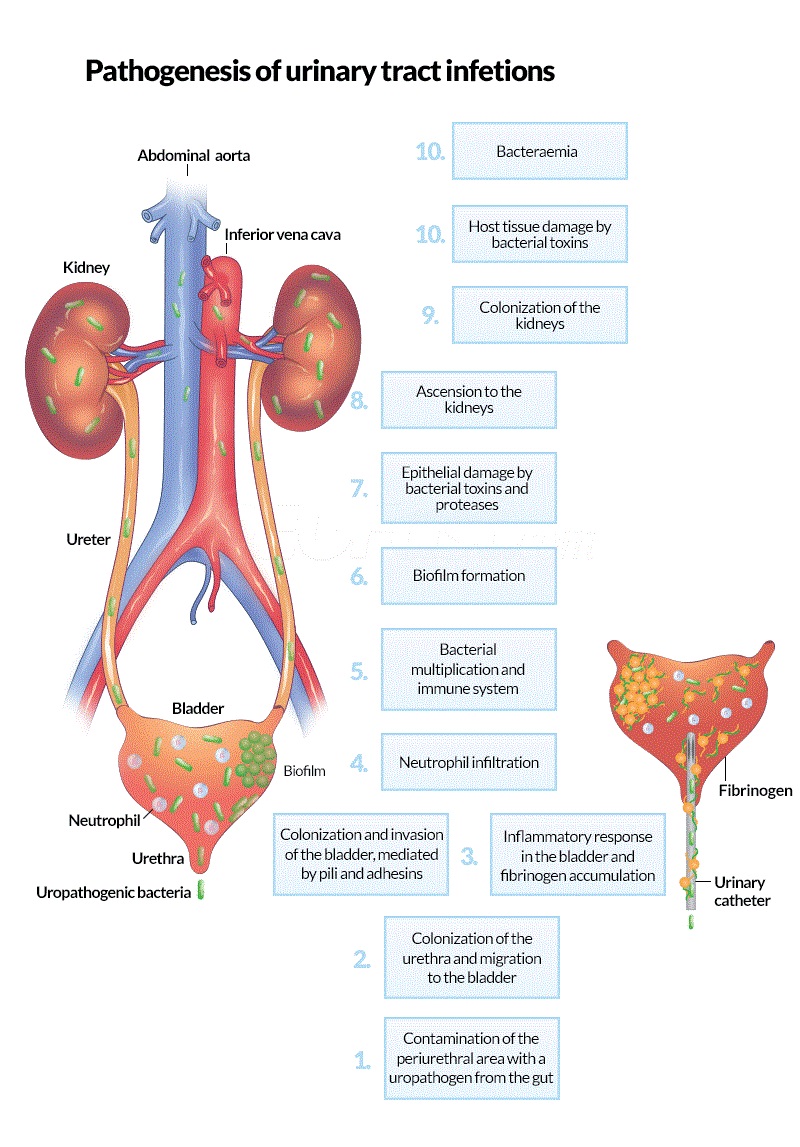Urinary Tract Infection (UTIs)
Urinary Tract Infections (UTIs) is a most common infection in human excretory system caused by microbes as like bacteria, fungi and viruses. Urinary tract infection can occur anywhere in the urinary tract. Most of the infections involve the bladder (cystitis) and urethra (urethritis) in the lower urinary tract and this can be painful and annoying. However, serious consequences can occur if the infection spreads to ureters and kidneys (pyelonephritis) in the upper urinary tract. Hence, urinary tract infections (UTIs) are also known as Bladder infections.
The urinary tract can be divided into the upper urinary tract and the lower urinary tract. The upper urinary tract consists of the kidneys and the ureters, and the lower urinary tract consists of the bladder and the urethra. Lower tract UTIs are common, although upper tract UTIs are rare and they are usually more severe. Women & girls are at greater risk of developing a urinary tract infection than are boys and men younger than 50 years of age. More than half of women in the world will have at least one UTI at some point in life. The specific reason for this is not well understood, but anatomic differences between the genders (a shorter urethra in women) might be partially responsible.
In the United States, about more than 10 million persons are undergone through urinary tract infections every year. Urinary tract infections are much more common in adults than in children, but about 1%-2% of children do get urinary tract infections. Urinary tract infections in children are more likely to be serious than those in adults (especially in younger children). The urinary tract infection is second most common infectious disease than the respiratory infection, as the most common type of infection. About 40% of women and 12% of men have a urinary tract infection at some time in their life.
Sign & Symptoms of Urinary Tract Infection
Urinary tract infections don't always cause signs & symptoms. Sign& symptoms of UTIs depend on what part of the urinary tract is infected. Lower tract UTIs are more common and it’s affect the urethra and bladder. But upper tract UTIs are more severe and that affect the kidneys. These can be potentially life threatening if bacteria move from the infected kidney into the blood stream. This condition, called urosepsis, can cause dangerously low blood pressure, shock and death.
Symptoms of a lower tract UTI include:
- A strong, persistent urge to urinate
- Burning with urination
- Increased frequency of urination without passing much urine
- Increased urgency of urination
- Urine that appears red, bright pink, tea or cola-colored due to presence of RBCs.
- Cloudy urine due to bacterial discharge.
- Pain or a burning sensation when peeing (dysuria)
- Needing to pee more often than usual during the night (nocturia)
- Urine that has a strong odor
- Lower abdomen discomfort
- Discharge with pelvic pain in women
- Rectal pain in men
Symptoms of an upper tract UTI include:
- Pain and tenderness in the upper back and sides.
- Shaking and chills
- High Fever
- Nausea & vomiting
- Confused, drowsy or have difficulty speaking.
Symptoms of an upper tract urinary infection in men and women are approximately similar. Women with a lower tract urinary infection may experience pelvic pain and symptoms of a lower tract urinary infection in men sometimes includes rectal pain in addition to the common symptoms shared by both men and women.
Causes and Risk factors of Urinary Tract Infection
Urine contains fluids, salts and waste products but is sterile or free of bacteria, viruses and other disease-causing organisms. Urinary tract infections typically occur when bacteria enter the urinary tract through the urethra and begin to multiply in the bladder. Large numbers of bacteria live in the digestive system, in the area around the vagina and rectum, and also on the skin. Bacteria may get into the urine from the urethra and travel into the bladder. When that happens, bacteria may take hold and grow into a full-blown infection in the urinary tract. If the infection is not treated promptly, the bacteria can travel up to the kidneys and cause a more serious type of infection.
There are many factors that can increase the risk of urinary tract infection. These factors include:
Common UTI Risk Factors:
- Younger than 50 years of age adults and bellow 2 years of age children are more likely to get UTIs
- Renal Calculus.
- A previous history of Urinary Tract Infections.
- Urinary tract obstructions or blockages, such as an enlarged prostate of man, renal stones and certain forms of carcinoma.
- Prolonged use of urinary catheters, which may make it easier for bacteria to get into the urinary bladder.
- Uncontrolled Diabetes mellitus
- Pregnancy
- Abnormally developed urinary structures from birth
- Weakened immune system
- Prolonged uses of Immunosuppressive drugs for AIIDS and or Auto-immune diseases.
- Reduced mobility after surgery or prolonged bed rest. Restricted lifestyle - poor bathroom hygiene.
Additional UTI risk factors :
- Having an enlarged prostate for men.
- Shorter length and location of the urethra in women. The urethra in women is very close to both the vagina and the anus. Bacteria that may naturally occur around both the vagina and anus can lead to infection in the urethra and the rest of the urinary tract. A woman’s urethra is also shorter than a man’s, and the bacteria have a shorter distance to travel to enter the bladder.
- Sexual intercourse: During sexual intercourse bacteria around the anus can move into the bladder through urethra. Most women have bacteria in their urine after intercourse. However, the body can usually get rid of these bacteria within 24 hours. But bacteria present in the GI tract may have properties that allow them to stick to the bladder.
- Non-lubricated latex condoms may increase friction and irritate the skin of women during sexual intercourse. Spermicides may increase UTI risk. They can cause skin irritation in some women. This increases the risk of bacteria entering the bladder. However, condoms are important for reducing the spread of sexually transmitted infections. To help prevent friction and skin irritation from condoms, be sure to use enough water-based lubricant and use it often during intercourse.
- Diaphragms may put pressure on a woman’s urethra. This can decrease bladder emptying.
- After menopause, estrogen level decrease causes changes in the urinary tract that can induce the normal growth of bacteria in vagina; hence increase the risk of a urinary tract infection.
The most common bacteria found to cause urinary tract infections is Escherichia coli (E. coli). Other bacteria can cause UTI, but E. coli is the reprobate about 90 percent of the time. Among the pathogens responsible for the remainder are Staphylococcus saprophyticus, Proteus mirabilis, Klebsiella pneumonia and Enterococcus faecalisetc.
Diagnosis of Urinary Tract Infection
The early stages of urinary tract infections are difficult to diagnose because of the infections don't always cause signs & symptoms.. A definitive diagnosis is usually made once the patient have complain few common sign and symptoms of UTI like Pain and tenderness in the upper back and sides or painful urine voiding with red, bright pink, tea or cola-colored urine. Diagnosis of urinary tract infection will usually be made after asking about the symptoms and following tests include:
- Urine Analysis: Analyzed urine sample to assess the presence of white blood cells, red blood cells and bacteria. The number of white and red blood cells found in urine can actually indicate the severity of infection. A culture and Antibiotic Sensitivity Test (ABST) of urine is used to determine the type of bacteria in the urine sample. This is an important test because it helps determine the appropriate treatment.
- If the physician suspects that the patient’s have an upper urinary tract infection, they may also need to examine a Complete Blood Count (CBC), Kidney Function Test (KFT), GFR test, Plasma glucose level, HbA1C level, STD testing (for chlamydia or gonorrhea) and blood cultures, in addition to the urine analysis. A blood culture can make certain that patient’s infection hasn’t spread into the blood stream.
- If the infection does not respond to treatment or patient have recurrent urinary tract infection then physician may use the following tests to examine his/her anatomical or function details of urinary tract for disease or injury:
- Diagnostic imaging: This involves assessing the urinary tract using Ultrasound, Computerized Tomography (CT) scan and Magnetic Resonance Imaging (MRI), Intravenous Pyelogram (IVP), Radiation tracking, or X-rays.
- Urodynamics: This procedure determines how well the urinary tract is storing and releasing urine.
- Cystoscopy: This diagnostic exam allows the doctor to see inside the bladder and urethra with a camera lens, which inserted through the urethra through a long thin tube.
- If the physician suspects that the causative agent is a virus then special testing may need to be performed. Viruses are rare causes of UTIs but can be seen in people who have had organ transplants or who have other conditions that weaken their immune system (immunosuppression).
Complication of Urinary Tract Infection
A urinary tract infection can be easily treated with antibiotics. Lower urinary tract infections rarely lead to complications. However, if it isn’t treated or if stop the medication early, this type of infection can lead to a more serious infection, like a kidney infection, bacteremia, urosepsis, systemic inflammatory response syndrome (SIRS), renal and perinephric abscess, emphysematous pyelonephritis, xanthogranulomatous pyelonephritis, malakoplakia and renal papillary necrosis etc.
Complications of a UTI may include:
- If urinary tract infection isn’t treated properly then the infections of the lower urinary tract can spread to the kidneys and may cause permanent kidney damage, especially in the elderly or very young children.
- Recurrent urinary tract infection may damage the kidneys and may cause renal failure. Recurrent infections are a problem for 20% to 40% of women after having their first infection.
- Sometimes urinary tract infection can spread to the blood (septicemia), leading to sepsis, which can be life-threatening. These cases require immediate treatment and also may required hospitalization.
- In case of pregnancy, urinary tract infection can lead to premature labor and delivering low birth weight or premature infants, causes high blood pressure (preeclampsia), pyelonephritis, sepsis and chorioamnionitis.
- Untreated urinary tract infection may causes acute or chronic prostatitis, urethritis, acute epididymitis, orchitis of man.
Treatment of Urinary Tract Infection
Antibiotics usually are the first line treatment for urinary tract infections. Which drugs are prescribed and for how long depend on the patient health condition and the type of bacteria found in the urine and or blood. Symptoms such as pain and a frequent urge to urinate usually resolve after 1-2 days of antibiotic treatment. However, it is important that patient take the full course of antibiotics to ensure that his/her infection is cured and to reduce the risk of recurrent infection.
Drugs commonly recommended for simple UTIs include:
- Amoxicillin
- Trimethoprim/sulfamethoxazole (Bactrim, Septra, others)
- Fosfomycin (Monurol)
- Nitrofurantoin (Macrodantin, Macrobid)
- Ciprofloxacin (Cipro)
- Levofloxacin (Levaquin)
- Cephalexin (Keflex)
- Ceftriaxone (Rocephin)
- Azithromycin (Zithromax, Zmax)
- Doxycycline (Monodox, Vibramycin, others)
Healthcare practitioner may also prescribe a pain medication (analgesic) that numbs patient bladder and urethra to relieve burning while urinating, but pain usually is relieved soon after starting an antibiotic. Patient with recurrent urinary tract infection may wish to discuss the following certain recommended treatment options with their healthcare practitioner-
- Low dose antibiotics, initially for six months but sometimes longer.
- A single dose of antibiotic after sexual intercourse if patient’s infections are related to sexual activity
- Vaginal estrogen therapy for postmenopausal women.
- An adult male, if the prostate is also infected (prostatitis), four weeks or more of antibiotic treatment may be required.
For a complicated urinary tract infections usually require a longer course of antibiotics treatment and may start with intravenous (IV) antibiotic therapy in the hospital. After a short period of IV antibiotics treatment, the antibiotics are given by mouth for up to several weeks.
Sometimes urinary tract infections will continue to recur or be long-lasting until an underlying structural defect, renal calculi, obstruction, renal carcinoma or disease or condition is addressed. For some conditions, surgery may be required to correct the underlying problems.
Prevention of Urinary Tract Infection
The following steps may help to prevent the risks and complications of Urinary tract Infections. And also once the patients have had a urinary tract infection (UTI), there are steps to prevent another one:
- Drink plenty of liquids each day, especially water. This will dilute the urine and keep it moving through the urinary tract, making it more difficult for bacteria to adhere to the walls of the urethra and bladder.
- Uses the bathroom as soon as possible, don’t hold urine in. Wipe from front to back. Doing so after urinating and after a bowel movement helps prevent bacteria in the anal region from spreading to the vagina and urethra.
- Sexual intercourse is associated with recurrent urinary tract infections, especially in younger women. Urinating after sex may help prevent urinary tract infections.
- Avoid potentially irritating feminine products. Using deodorant sprays or other feminine products, such as douches and powders, in the genital area can irritate the urethra.
- Avoiding the use of spermicidal foams and jellies, products (condoms) containing Spermicides.
- Postmenopausal women may benefit from the use of vaginal estrogen gels or creams.







Very helpful information.
Thank you.
Thank you for beautifully describing this post and It’s really helpful for all personal. Good job! Keep Writing..